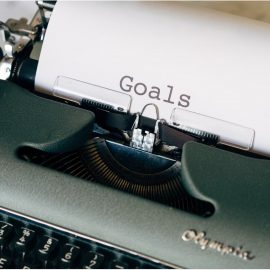

This article is an excerpt from the Shortform book guide to "Think Big" by Grace Lordan. Shortform has the world's best summaries and analyses of books you should be reading.
Like this article? Sign up for a free trial here.
Do you get discouraged? Does it stop you from trying again? What if you could turn that around?
Setbacks are unavoidable. How you react to them is up to you. You can train yourself—not only to bounce back—but to turn one step backward into two steps forward. Behavioral science expert Grace Lordan shares three ways to do that.
Keep reading to learn how to become more resilient and move forward in strength.
How to Become More Resilient
Whether you persist through setbacks depends on your resilience—your ability to withstand, adapt to, and recover from adversity. Lordan suggests several strategies you can use to bounce back better from adverse events. Here’s her advice on how to become more resilient.
Tip #1: Distract Yourself
First, create a list of things to distract you when you’ve had a bad day. Then, do something from this list—whether that’s taking a bubble bath or partaking in a favorite hobby—whenever you face a setback. Distracting yourself from the initial pain of the failure will help diminish that pain so you’re better able to deal with it. Calming yourself down will also prevent you from making rash decisions in the heat of the moment—a tendency caused by the affect heuristic, our tendency to make decisions based on how we’re feeling instead of logical reasoning.
(Shortform note: Some experts agree that distracting yourself when you’ve had a bad day can help. In particular, they recommend physically removing yourself from the situation; shifting your surroundings can prompt your brain that it’s OK to switch your mood. But what if you’re not able to take a break? Some experts suggest that you can circumvent the affect heuristic by speaking to yourself in the third person. For example, instead of saying, “I’m so angry,” say, “[Your Name] is so angry.” This strategy helps you distance yourself from your emotions, which helps you gain control over your emotions and prevent them from driving your decisions.)
Tip #2: Practice Gratitude
Second, Lordan recommends that you regularly practice gratitude. Humans pay more attention to losses than we do to gains, which can make us feel worse about our lives and reduce our ability to bounce back. By regularly practicing gratitude, you remind yourself of all the good things in your life. As a result, you’re better able to handle failures because you’re able to counterweight their impact with the acknowledgment of the positive.
(Shortform note: In The Gifts of Imperfection, Brené Brown adds that practicing gratitude improves your self-esteem by boosting your sense of worthiness—your conviction that you’re good enough as you are. When you ignore the good things going on in your life, you see yourself and your actions as “not enough.” Focusing your energies instead on the positive aspects of your life makes you more likely to feel like you’re “enough.”)
Tip #3: Redefine “Setback”
You can also bounce back better from potentially adverse events by redefining what counts as an adverse event. To do so, Lordan suggests that you stop comparing yourself to others. No matter how well you do, you won’t achieve satisfaction if you compare your own success to that of others—because someone else will always be doing better than you. Instead, compare yourself to yourself: In other words, judge your growth by comparing your current self to your past self. If you stop using others’ accomplishments to evaluate your own success, you’ll stop being upset by their accomplishments.
(Shortform note: Constantly comparing yourself to others is a form of what The Gap and The Gain authors call “gap-thinking.” The authors agree with Lordan that gap-thinking is problematic: If you’re trying to measure up to an idealized version of yourself based on others’ standards, you don’t have control over what success means to you—and so might feel helpless and unmotivated. Instead, the authors agree with Lordan that you should compare your current self to your past self—which they call “gain-thinking.” When you measure your progress against your past self instead of others’ successes, you have a consistent standard upon which to improve.)

———End of Preview———
Like what you just read? Read the rest of the world's best book summary and analysis of Grace Lordan's "Think Big" at Shortform.
Here's what you'll find in our full Think Big summary:
- Why most of our attempts to transform our lives fail
- How to overcome the cognitive biases that hold us back from our goals
- How to take the necessary small steps to change your life long term






